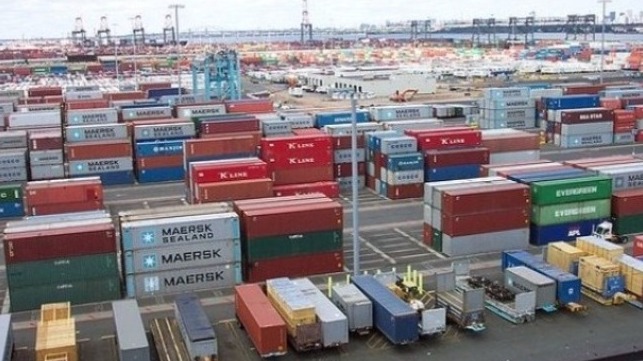SoCal Ports to Charge Carriers if Containers Linger

Faced with massive backlogs of containers at the ports in the San Pedro Bay, the operators of the two ports announced a new plan to charge new daily fees to the ocean carriers that permit containers to linger in the ports. Saying that the significant increase in dwell times experienced in ports is making it difficult to clear cargo off the terminals and bring in ships at anchor, the new measure is the latest effort to speed the movement of cargo at the ports of Los Angeles and Long Beach.
Beginning November 1, the ports will charge ocean carriers $100 per container, increasing in $100 increments per container per day, when cargo lingers at the terminals. Under the new policy, the surcharge is for containers scheduled to move by truck that remain in the port for more than nine days. For containers moving by rail, the surcharges begin if the container has dwelled for three days or more.
“We must expedite the movement of cargo through the ports to work down the number of ships at anchor,” said Port of Los Angeles Executive Director Gene Seroka. “Approximately 40 percent of the containers on our terminals today fall into the two categories. If we can clear this idling cargo, we’ll have much more space on our terminals to accept empties, handle exports, and improve fluidity for the wide range of cargo owners who utilize our ports.”
According to the ports, before the pandemic-induced import surge began in mid-2020, on average, containers for local delivery sat at container terminals under four days. Containers destined for trains dwelled less than two days in the past.
These actions come as the number of ships continues to rise. Over the weekend two more records were established according to the Marine Exchange of Southern California. Just days ago, it was 100 ships waiting, but over the weekend it reached 110 total vessels waiting outside the ports including 80 containerships. About half the vessels are actually at anchor with the remainder waiting further offshore.
“With the escalating backlog of ships off the coast, we must take immediate action to prompt the rapid removal of containers from our marine terminals,” said Port of Long Beach Executive Director Mario Cordero. “The terminals are running out of space, and this will make room for the containers sitting on those ships at anchor.”
Last week, California Governor Gavin Newsom order state agencies to find additional space for the storage of containers while the City of Long Beach is temporarily relaxing zoning rules to help address a desperate shortage of storage space for shipping containers. For the next three months, the city is temporarily relaxing zoning rules to permit higher stacking of containers on private property.
The actions by the two ports come as the industry is reportedly also holding meetings to develop its own voluntary protocols to reduce the number of vessels holding beyond the anchorage. The ports said that their new policy was developed in coordination with the Biden-Harris Supply Chain Disruptions Task Force, U.S. Department of Transportation, and multiple supply chain stakeholders. Previously, the Biden administration pressured both ports to open for around-the-clock, seven days a week, container operations, but reports indicate that with the lack of truckers the ports did not see a dramatic increase in movements.
“I support the actions taken by the ports of Los Angeles and Long Beach today to charge ocean carriers for lingering containers on marine terminals. These actions aim to expedite the movement of goods and reduce congestion in our ports,” said John D. Porcari, Port Envoy to the Biden-Harris Supply Chain Disruptions Task Force. “As our economy continues to grow, increased demand and disruptions caused by the pandemic are putting our supply chains to the test. While we’ve seen new records set in terms of throughput this year at West Coast ports, we need more players throughout the supply chain to keep stepping up. The federal government will continue to bring together private companies and stakeholders from across the supply chain and serve as an honest broker helping to surface solutions like this to address supply chain disruptions.”
Last week, during a town hall meeting broadcast on CNN, President Biden was asked if he would consider calling out the National Guard to handle containers and movement along the supply chain. He responded by saying that it was an option if the current actions did not produce the results they are looking for to reduce the congestion and backlogs.
For their part, the twin ports are promising that the fees collected from dwelling cargo will be re-invested for programs designed to enhance efficiency, accelerate cargo velocity, and address congestion impacts throughout the San Pedro Bay.
